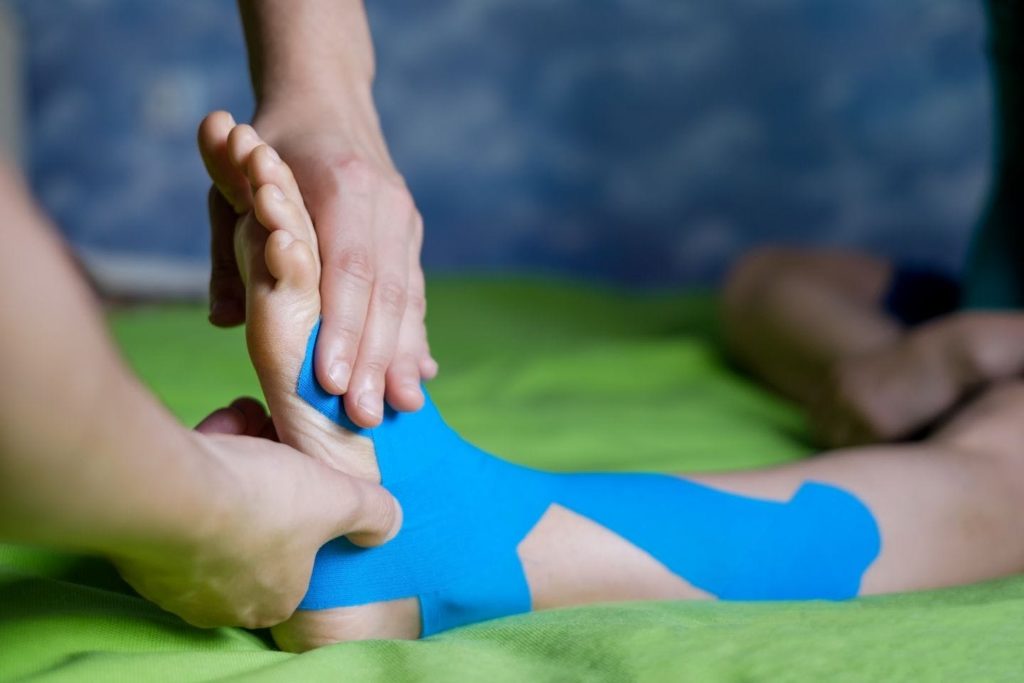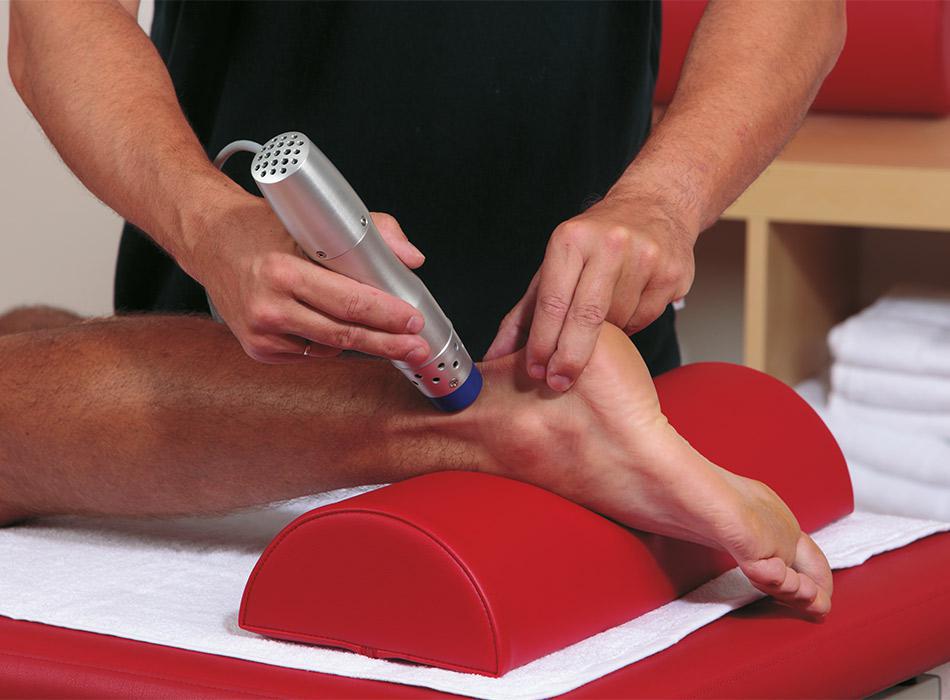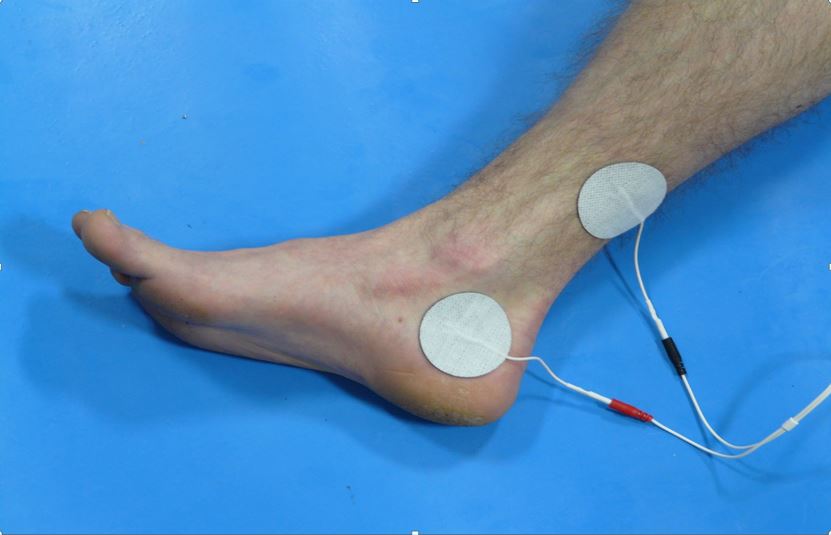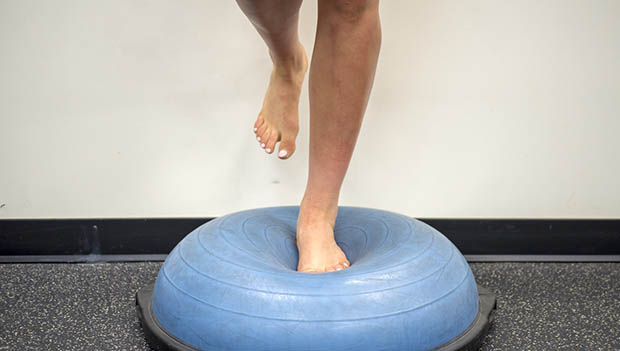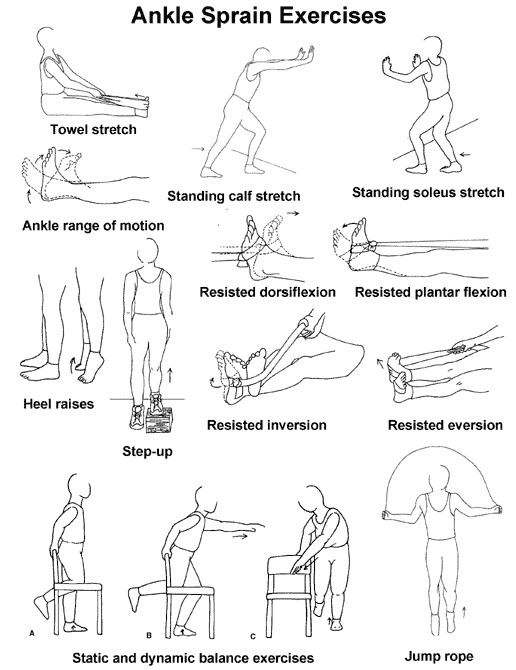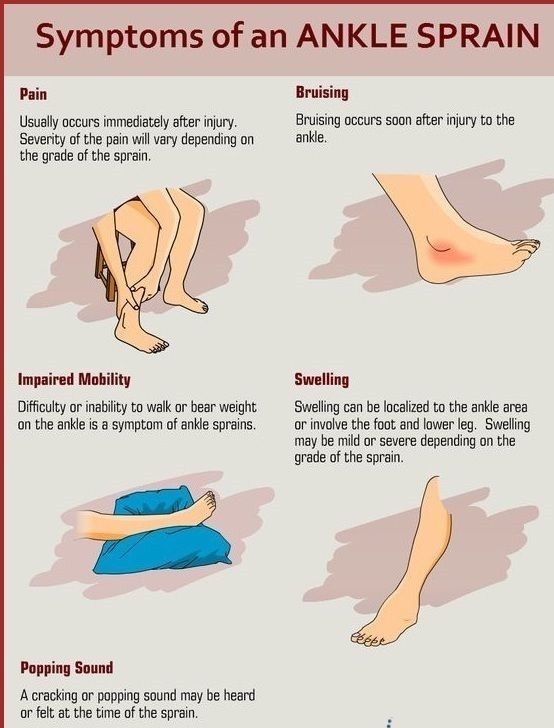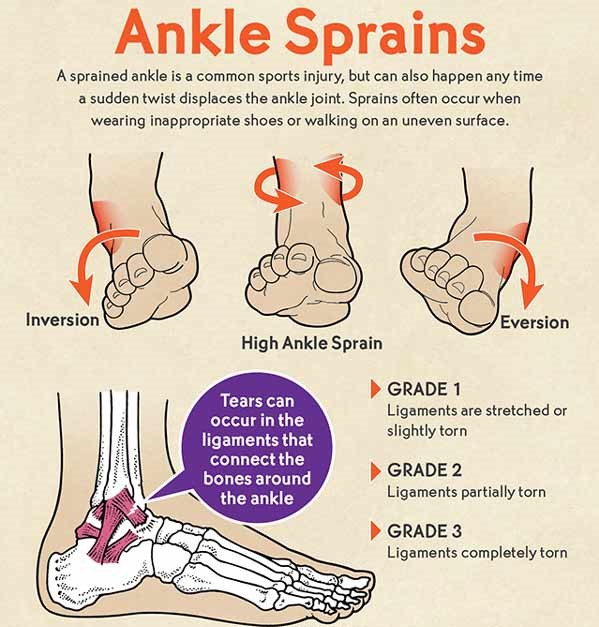Ankle Sprain
What is an Ankle Sprain?
An ankle sprain is an injury to the ligaments that surround and connect the bones of the leg to the foot.
The injury typically happens when you accidentally twist or turn your ankle in an awkward way. This can stretch or tear the ligaments that hold your ankle bones and joints together.
All ligaments have specific boundaries to move that allow them to keep the joints stabilized. When ligaments surrounding the ankle are pushed past these boundaries, it causes a sprain.
Causes for Ankle Sprain –
An ankle sprain often occurs when the foot suddenly twists or rolls, forcing the ankle joint out of its normal position.
During some activity, the ankle may twist inward/outward as a result of sudden or unexpected movement resulting in one or more ligaments around the ankle to stretch or tear.
Ankle sprains can happen to anyone at any age. Participating in sports, walking on uneven surfaces, or even wearing inappropriate footwear can all cause this type of injury.
Symptoms of Ankle Sprain –
Some swelling or bruising can occur as a result of tears. You may also feel pain or discomfort when you place weight on the affected area.
You may have a sprained ankle if you notice the following symptoms in the ankle:
• swelling
• tenderness
• bruising
• pain
• inability to put weight on the affected ankle
• popping sound
The ankle can sustain many different types of injuries. It’s important to see your doctor when you’re experiencing problems with your ankle to determine whether the injury is a sprain or something more severe.
Treatment for Sprained Ankle –
There are essential treatment aims that need to be covered to effectively rehabilitate your sprained ankle and prevent recurrence.
Physiotherapy Treatment Aims –
Injury Protection, Pain Relief & Control Inflammation – PRICE protocol (Protection, Rest, Ice, Compression, Elevation) is a must in initial hours of injury. We help you provide pain relief using modalities like Ultrasound therapy, IFT therapy, soft tissue kneading. Advice on ankle brace & proper foot-wear.
Regain Full Range of Motion – Performing active movements with the toes and ankle within pain free limits, to improve local circulation & avoid stiffness. Manipulation and PRICE protocol results in greater improvement in range of movement. Stretching techniques are great help.
Strengthen your Ankle and Calf Muscles – Practice strengthening exercises using therabands, resisted exercises, loop bands, weight bearing exercises.
Restore Joint Proprioception & Balance – Practice balance & stability exercises, working on dynamic stability exercises, Kinesiology taping for support, focusing on functional activities.
Restore Normal Function – Practising motor coordination skills while performing mobility exercises & continue to progress the load-bearing capacity.
Speed & Agility training
Sport-Specific Skills – Increasing the complexity of motor coordination exercises
Graduated Return to Training – Gradually progress the loading, from static to dynamic exercises, from partially loaded to fully loaded exercises and from simple to functional multi-tasking exercises. Alternate cycled with non-cycled exercises (abrupt, irregular exercises). Using different types of surfaces to increase the level of difficulty.
Return to Competition
There is no specific time frame for when to progress from each stage to the next. Your injury rehabilitation will be determined by many factors during our clinical assessment.
Also the time span for recovery differs in individuals. While we do know that the ligaments themselves will take at least six weeks to heal, your muscle strength, the range of motion, proprioception, and return to function can vary considerably.
If left untreated may load to chronic ankle instability, persistent discomfort & severe complications.
Remember –
A joint sprain is the overstretching or tearing of ligaments. A joint strain is the overstretching or tearing of muscles or tendons.The main difference is that with a sprain you may have bruising around the affected joint, whereas with a strain, you may have spasms in the affected muscle.
For great results with faster recovery, eliminate your pain with Shockwave Therapy – Try Us Now!
For further information, reach out to us at –
Pooja Physiotherapy & Health Care Center
Blk 77 Indus road #01-521S’160077
Call now @ 6384 5452 or whatsapp @ 8322 3371 or
Drop an email at info@physiopooja.com.sg
